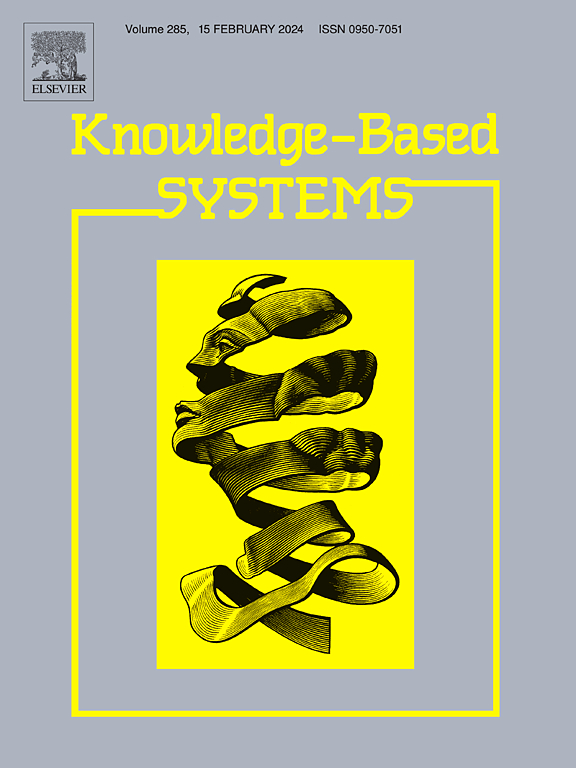基于时间-频谱-空间同步注意的脑电情绪识别网络
IF 7.2
1区 计算机科学
Q1 COMPUTER SCIENCE, ARTIFICIAL INTELLIGENCE
引用次数: 0
摘要
脑电图(EEG)提供了人类情绪状态的客观和精确的表征,使基于脑电图的情绪识别成为情感计算和智能系统的关键领域。然而,脑电图信号包含时间-频谱-空间特征,表现出动态变化、频带相关性和空间依赖性,具有不同域的分辨率。挑战在于适应领域之间的分辨率差异,从而提高模型跨这些领域集成互补信息的能力。此外,对多领域特征的处理往往导致模型结构复杂,特征融合过度,造成信息丢失。为了应对这些挑战,我们提出了一个统一的框架:基于时间-频谱-空间同步注意力的网络,它促进了多领域数据的高效建模。具体来说,该网络由一个时间-频谱-空间注意编码器和一个分类解码器组成。该编码器适应了时间-光谱-空间域分辨率差异,实现了时空与光谱数据的同步融合,简化了模型结构。此外,我们引入了一种门控机制来自适应地平衡域间的权重,防止过度融合导致信息丢失。最后,广泛的实验比较以及主观和客观分析表明,我们提出的网络在SEED, SEED- iv和DEAP上优于最先进的模型。本文章由计算机程序翻译,如有差异,请以英文原文为准。
Temporal-spectral-spatial synchronization attention-based network for EEG emotion recognition
Electroencephalogram (EEG) provides an objective and precise representation of human emotional states, establishing EEG-based emotion recognition as a pivotal area in affective computing and intelligent systems. Nevertheless, EEG signals contain temporal-spectral-spatial features, exhibiting dynamic variations, frequency-band correlations, and spatial dependencies, with varying resolutions across domains. The challenge lies in adapting to resolution differences between domains, thereby improving the model’s ability to integrate complementary information across these domains. Moreover, processing multi-domain features often leads to complex model structures and excessive feature fusion, resulting in information loss. To tackle these challenges, we propose a unified framework: the Temporal-Spectral-Spatial Synchronization Attention-Based Network, which facilitates efficient modeling of multi-domain data. Specifically, the proposed network consists of a temporal-spectral-spatial attention encoder and a categorical decoder. The encoder adapts to resolution differences across temporal-spectral-spatial domains and synchronizes the fusion of spatiotemporal and spectral data, thus simplifying the model structure. Furthermore, we introduce a gating mechanism to adaptively balance the weights across domains and prevent excessive fusion that results in information loss. Finally, extensive experimental comparisons along with both subjective and objective analyses, demonstrate that our proposed network outperforms state-of-the-art models on the SEED, SEED-IV and DEAP.
求助全文
通过发布文献求助,成功后即可免费获取论文全文。
去求助
来源期刊

Knowledge-Based Systems
工程技术-计算机:人工智能
CiteScore
14.80
自引率
12.50%
发文量
1245
审稿时长
7.8 months
期刊介绍:
Knowledge-Based Systems, an international and interdisciplinary journal in artificial intelligence, publishes original, innovative, and creative research results in the field. It focuses on knowledge-based and other artificial intelligence techniques-based systems. The journal aims to support human prediction and decision-making through data science and computation techniques, provide a balanced coverage of theory and practical study, and encourage the development and implementation of knowledge-based intelligence models, methods, systems, and software tools. Applications in business, government, education, engineering, and healthcare are emphasized.
 求助内容:
求助内容: 应助结果提醒方式:
应助结果提醒方式:


